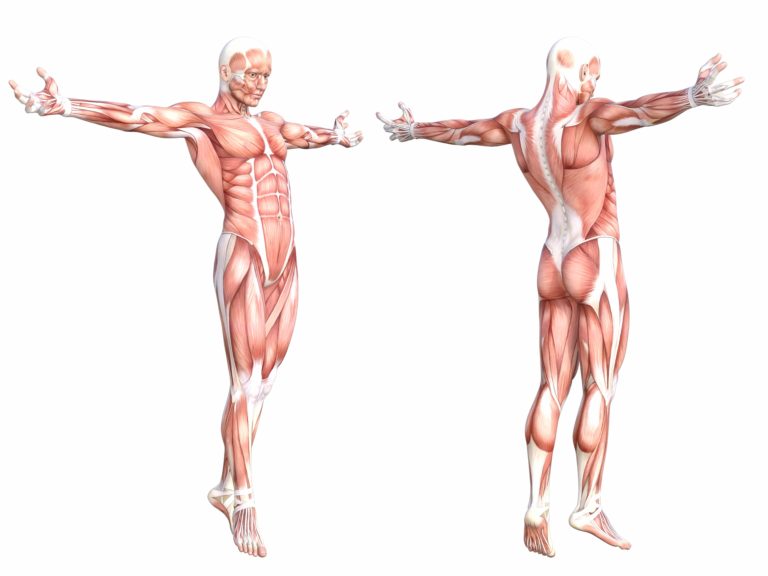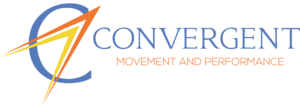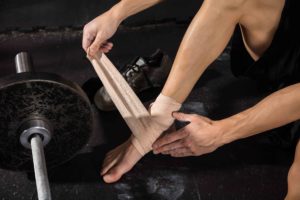Muscles

There are numerous types of muscles within the body, but we will be focusing on skeletal muscles. Skeletal muscles, which will be referred to simply as “muscles” from here on out, are attached to bones by tendons, and are what allow you to perform voluntary body movements such as walking, running, lifting, squatting, pushing, pulling, carrying, and reaching.
Muscle Stressors
There are normal and abnormal stressors that result in different outcomes on muscles. Muscles are contractile tissues, meaning that you can voluntarily “flex,” or contract, your muscles.
They are most commonly loaded and stressed when they contract, or when they are stretched and lengthened. A particularly stressful condition includes the combination of the above conditions, consisting of when a muscle is contracting while it is actively lengthening, or when it is already in a lengthened position.
The way by which muscles adapt to stressors is dependent on the nature of the stressor, as well as the recovery process post stressor.
Please remember, challenging obstacles from which you are able to fully recover result in a good stress known as Eustress. On the other hand, obstacles deemed threatening and/or obstacles from which you are unable to fully recover will result in a negative stress known as Distress.
Distress: A Dangerous Threat to Muscles
Negative and potentially painful stress may occur when stressors placed on a muscle exceed that of what the muscle can handle. Inappropriate loading and stress consisting of excessive muscular contraction under resistance and/or overstretching of the muscle may result in muscle injury.
There are 3 primary grades of muscle injury, which are accompanied by the following signs and symptoms:
Grade 1 (first-degree) tear
- Microtearing of the muscle
- Mild pain that begins within the first 24 hours post injury
- Mild swelling
- Local tenderness with palpation/touch
- Pain reproduced when the involved muscle is stretched or contracted
- ***Often associated with the muscle soreness you experience after resistance-training exercise.
Grade 2 (second-degree) tear
- Mild-moderate tearing of the muscle (partial tear)
- Moderate pain that requires stopping the activity
- Mild-moderate swelling
- Significant increase in pain with palpation/touch
- Significant increase in pain when the involved muscle is stretched or contracted
Grade 3 (third-degree) tear
- Near complete or complete tear
- Severe pain
- Moderate-severe swelling
- May notice a defect with palpation (bump, muscle retracted)
- Stressing tissue is often painless
Resolve What's Holding You Back: Restoration and Recovery
Upon injury and distress, muscles undergo a process of healing consisting of the Inflammatory phase, Proliferation phase, and Remodeling phase.
Please read the following article to understand how best to manage your muscle injury during each of the 3 phases of healing.
Eustress: A Healthy Challenge for Muscles
Muscles are stressed appropriately and in a healthy manner when they contract against a resistance and/or are stretched within the limits of what the muscle can handle.
In order to promote muscle growth, you must contract against enough resistance to produce microtears that are then healed stronger than before as your body rebuilds and remodels the tissue.
Muscles are loaded and stressed often throughout the day with everyday activities that involve movement of your body. With proper loading, muscle strength and/or length will either remain the same or increase depending on your activity level.
Time to Move Forward: Preparation and Fitness
Improving fitness is among the most effective approaches addressing the ‘preparation’ aspect of performance enhancement. Preparing for maximal performance through fitness involves optimizing the balance between movement quality, strength, endurance, and speed.
Focusing on movement quality ensures that you are not placing excessive stress onto unintended muscles while not properly utilizing the intended muscles. Improper movement quality may lead to an imbalance where the over-stressed muscles experience pain and injury, while the under-utilized muscles lack the benefits from exercise and fitness resulting in reduced overall performance.
Focusing on strength prepares your muscles to handle greater loads and stress, and ultimately demonstrate improved performance.
Focusing on endurance improves the ability of your muscles to maintain strength for prolonged periods of time.
Focusing on speed improves how quickly your muscles are able to react to outside stressors and help accomplish your goals.
TAKE ACTION!
- If you believe you have undergone a muscle-related injury, be sure to consult with a licensed healthcare provider specializing in this field in order to receive a definitive diagnosis rather than attempting to “guess and test.”
- Please make sure you clearly understand the 3 phases of healing. I am always available if you have any questions.
- As you enter the Proliferation and Remodeling phases of healing, initially focus your efforts on developing movement control through muscular activation in ways that reduce stress onto the affected muscle. As you progress through healing, you will gradually re-introduce activities that contract and stretch the affected muscle in a way that may reproduce symptoms but does not result in lingering aggravation.
- It is time to begin the ‘preparation’ aspect of performance enhancement as soon as sufficient restoration of any muscle-related distress has occurred. When ready, begin implementing the information presented in this article, as well as the remainder of the content within the “Convergent Path to Performance,” in order to maximize Eustress while minimizing Distress.
Summary
Muscles play multiple roles within your body, and therefore undergo a multitude of stressors throughout the day. The key is to remember that you hold significant influence over the health of your muscles. By understanding how muscles are stressed and recover, you will have the tools necessary to maximize positive adaptation while reducing the occurrence of distress and injury.

Dr. Eugene Ketselman PT, DPT, Cert. MDT, CSCS
Dr. Eugene Ketselman is a licensed Physical Therapist, Certified Strength and Conditioning Specialist, Performance Coach, and owner of Convergent Movement and Performance; Home of where Physical Therapy, fitness, and performance training converge! Dr. Ketselman's mission is to help motivated athletes and active adults excel in their passions by maximizing physical performance and reducing setbacks from pain and injury.
Here at Convergent Movement and Performance, we practice what we preach. You know we are a good match for one another as soon as you find yourself relating to the content we provide. Be sure to click below to learn more.
Do you have specific questions that aren’t answered on this website?
Click below
Does pain, weakness, or exhaustion prevent you from reaching your FULL potential while performing the activities you love?
Click below
Do you love what you’re seeing, but still aren’t sure if you can make the commitment?
Click below
Contact Us
Convergent Movement and Performance serves out of Northern – Central New Jersey, conveniently located to those that live, work, and travel in the nearby towns of Warren, Bridgewater, Martinsville, Watchung Hills, Bedminster, Basking Ridge, Bernardsville, Chatham, Westfield, and Piscataway within Somerset, Morris, Union, and Middlesex counties, NJ.

